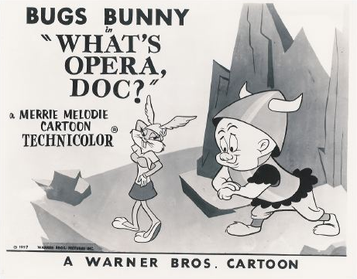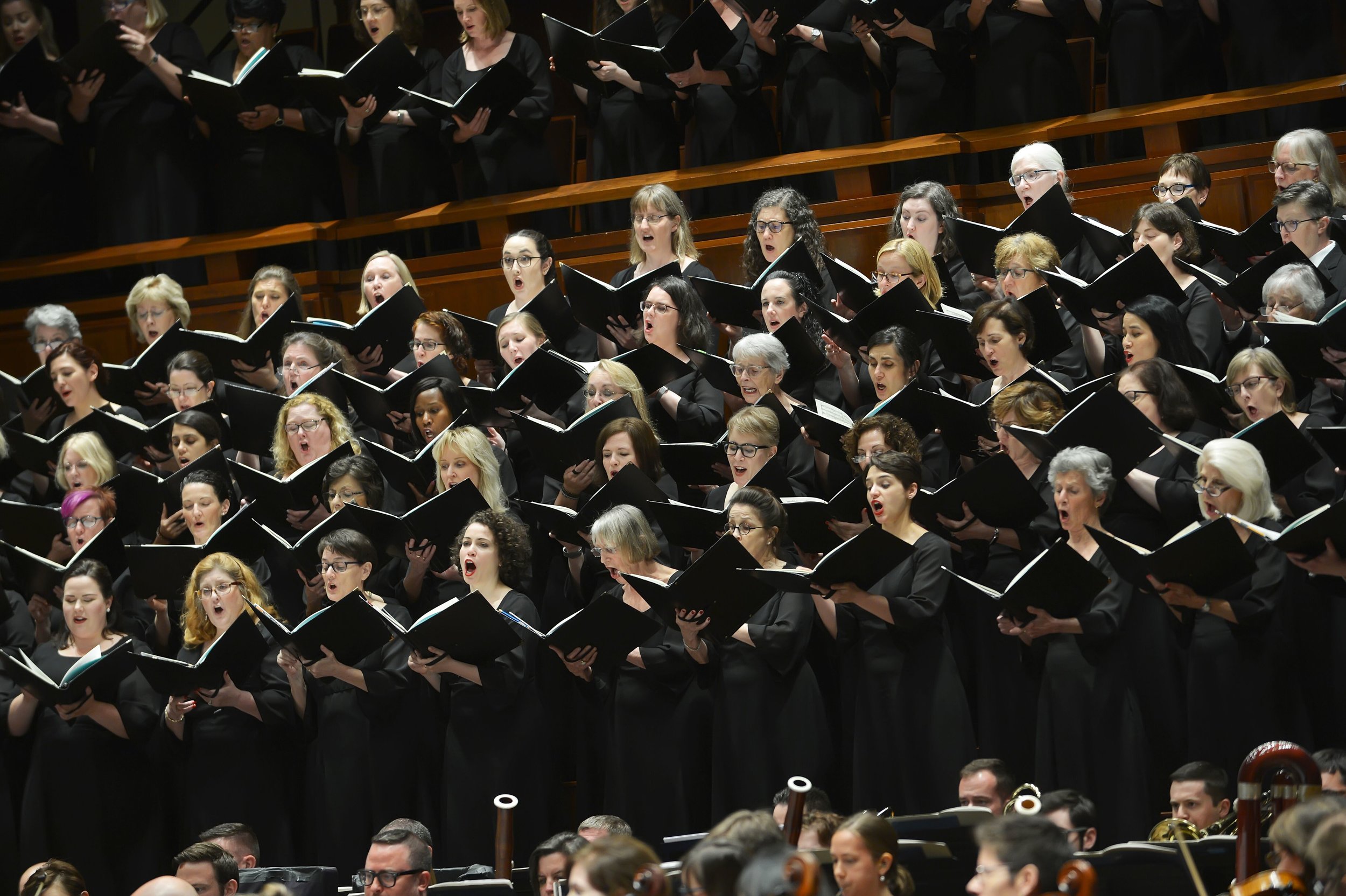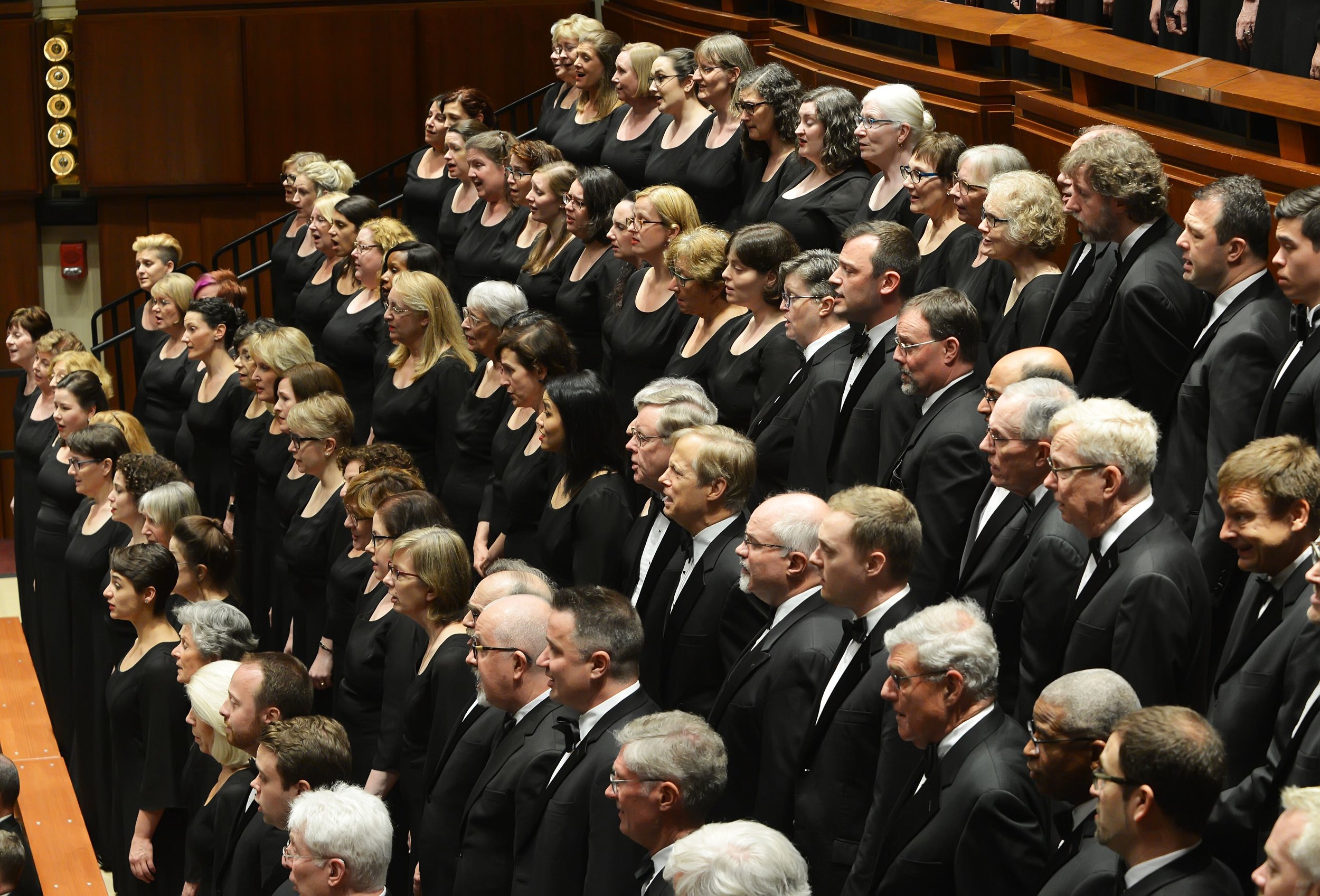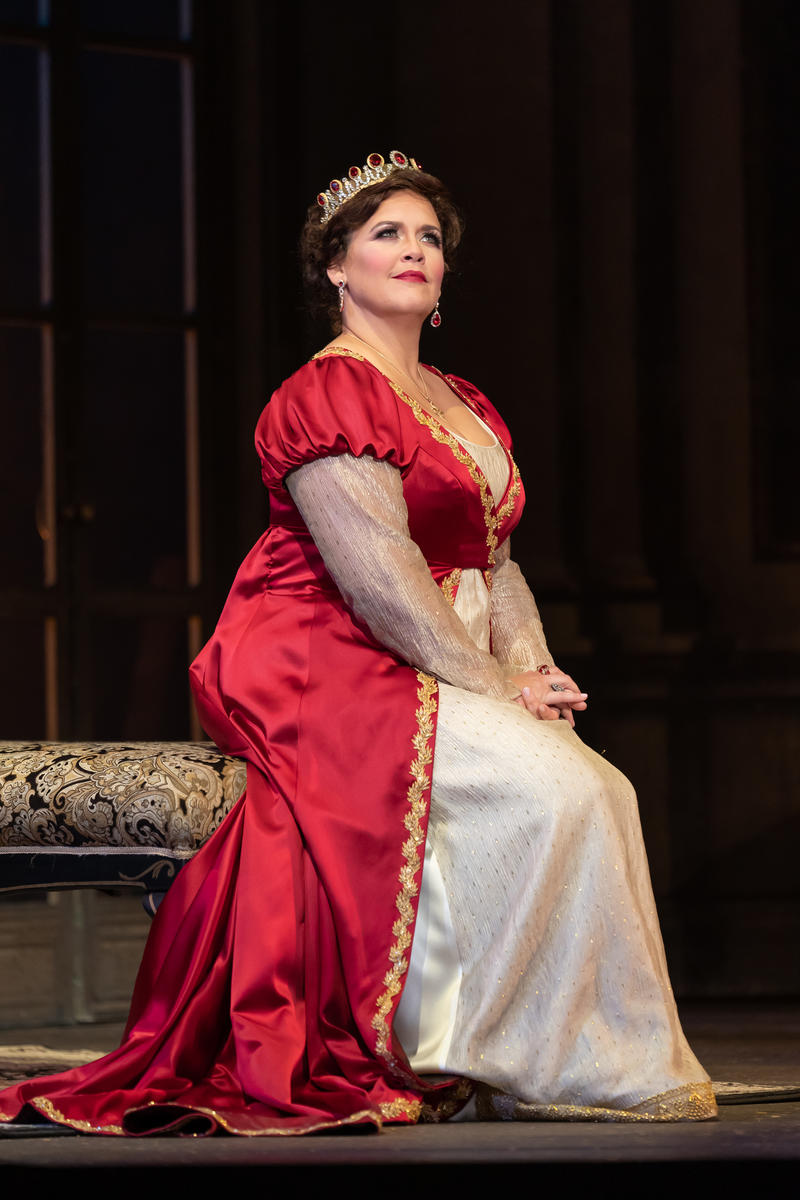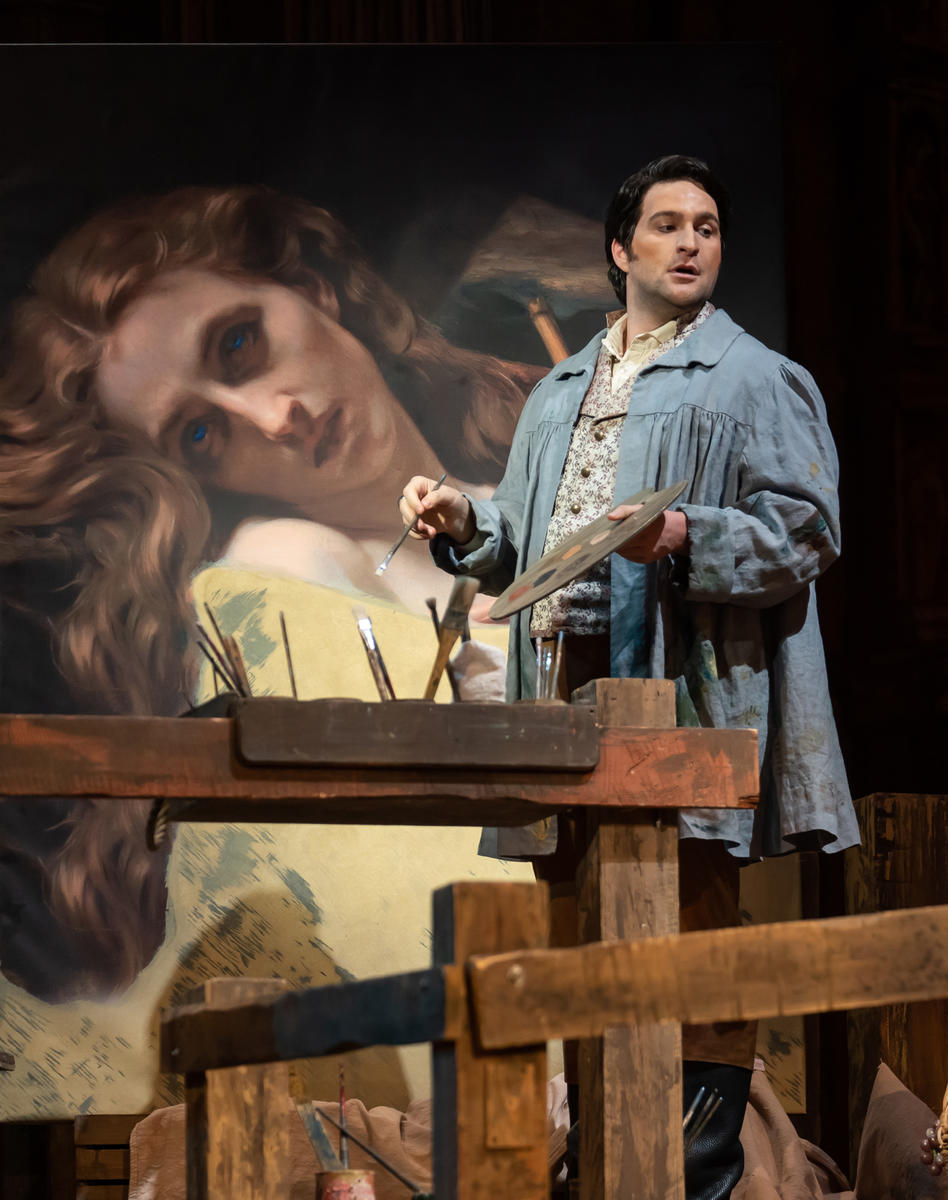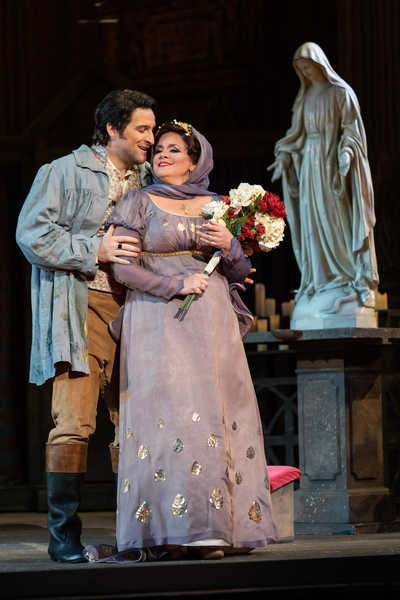Logo courtesy of Wolf Trap Opera.
Remember Rowan and Martin’s “Laugh In” and its oft repeated comedic line, “Here comes the judge!”, made famous by Sammy Davis, Jr.; great fun, right? Like trips to the pool and backyard barbecues, Wolf Trap Opera’s summer season rolls around every June lasting to August. While the large opera houses are in between seasons, WTO is making a splash and cooking up a storm. It’s more like a festival really, than a season, and my oft repeated line is that “Wolf Trap Opera makes opera fun!”. The WTO Filene Artists, a competitive selection of emerging artists from around the country, are readying their roles and will be supported by a team of young Studio Artists; these folks are all here for the summer to get as much performance experience and opera learnin’ as they can. It is a chance for us to hear some of the best new talent in the US bring their energy and enthusiasm and fresh voices to the air-conditioned Barns and the open-air Filene Center. For the best seats get your tickets now (Special warning: only a few seats remain for “Aria Jukebox” on July 28 (see below), my favorite Wolf Trap fun event of each year).
Operas -
June 22, 26, 28, 30 – Merlin’s Island by Gluck/The Emperor of Atlantis by Ullman
June 22 – L’heure Espagnole by Ravel
July 19, 21, 24, 27 – Ariadne auf Naxos by Strauss
August 9 – The Barber of Seville by Rossini
Opera events: June 1, 2, “Steven Blier: 25th Anniversary Concert”; June 1, “Porgy and Bess: A Concert of Songs”; June 13 and July 11, “Vocal Colors”; July 23, “Master Class with Lawrence Brownlee”; July 28, “Aria Jukebox”; Aug 1, 2, “Studio Spotlight”.
Merlin’s Island and The Emperor of Atlantis - ever heard of them? Me neither, I regret to say,…but hold on. Both of these are fantasies, one light, one dark. One of the things I love about Wolf Trap Opera and other smaller companies is that they can take chances on pulling forward lesser known, sometimes shorter works, for production, and this team is expert at finding the gems among the lesser known works. It is also worth noting that WTO selects its operas to match the singers who have come to Wolf Trap for three months of intensive training. And of course, we get to hear something new and different. After reading the story lines, I’m thinking these two are not to be missed.
So, what are these two smaller pieces all about? WTO bills them as “The World Turned Upside Down”. In some sources, the name of Gluck’s opera is listed as Merlin’s Island, or The World Turned Upside Down (1758). Speaking of Gluck, Mr. Christoph Willibald Gluck (1714-1787) that is, started a movement in opera to focus the music in operas on serving the poetry and not the singer’s vanity. Best known perhaps for his opera Orfeo ed Euridice (1762), his influence was so great he is considered a father figure for Mozart. The librettist for Merlin is Louis Anseaume, and the poetry in Merlin is satirical and amusing. Two guys land on an island of plenty with all the food, drink, and young ladies they might want. Further, the girls are rich and have to marry poor men, and they are always faithful. Even more further, fighting is forbidden, and the lawyers are all honest. See, the world is turned upside down. If the music must serve the poetry for Gluck, it will be light hearted and enjoyable.
We cannot expect the same for Ullmann’s Emperor where a much darker world is turned upside down, though it includes a love story and some humor. The opera’s full name is The Emperor of Atlantis, or The Refusal to Die (1975). The opera was written in 1943 when composer Viktor Ullmann and librettist Peter Kien were held in the Theresienstadt ghetto/concentration camp, but the German authorities would not allow the work to be performed, viewing it as anti-Hitler. The underlying story line is that Death in a feud with the Kaiser of Atlantis goes on strike. As you can imagine, things do not go well, the Kaiser’s authority is undermined, and Death has a stringent demand for returning to work. Important philosophical questions are posed. Both Ullmann and Kien were later transferred to Auschwitz and died in the gas chambers there. Since its (re)discovery and later premiere in 1975, the opera has drawn praise for both its poetry and its music and has regularly been performed worldwide. There are 20 musical sections that mix genres somewhat and 14 instruments, including a banjo, that may represent what was available in the ghetto.
Now with composer Richard Strauss’ Ariadne auf Naxos (1916), we are back on familiar ground with one of his most popular operas, although this will be a new production. This is one of seven operas Strauss composed with librettist Hugo von Hofmannthal, including his famous Elekra and Der Rosenkavalier. Ariadne is a comedic opera within an opera: a wealthy employer requires two companies to perform at the same time in his home so that the evening’s fireworks can begin on time; one companies is to perform an opera seria and another a commedia dell’arte play. We can expect there will be fireworks before the fireworks. The role of Ariadne is coveted by many sopranos, and the music is beautiful Strauss music. I note that soprano Alexandria Shiner will sing in the role of Ariadne; if you heard her perform recently with The Chorale Society of Washington, you would not want to miss this performance.
Each year WTO performs one of the more popular operas in its Filene Center which pulls in an audience that might not be opera regulars, including a much younger crowd; maybe a few will be recruited over to our side. This year it will be Gioachino Rossini’s The Barber of Seville; I think at any given time day or night this opera is playing somewhere in the world, and when you attend you will see and hear why. Barber is a light-hearted comedy of love and deception, another comedic work based on commedia dell’arte. Figaro, a barber/fixer undertakes helping Count Almavira secure the hand of Rosina, the ward of Dr. Bartolo who plans to marry Rosina himself. Bartolo is assisted by the music teacher Don Basilio. Disguises and plots abound until our two young lovers are united with a happy ending for everyone except Dr. Bartolo. You might remember that in Marraige of Figaro, the Count and Figaro meet again with the Count chasing Figaro’s fiance. Barber has tunes you will go home singing. For opera nerds, the Filene Center is not the ideal venue for opera. Because of its size and open-air construction, the singers have to be miked, a no-no for the opera purist, but the performances I have attended have sounded good and WTO has provided some spectacular sets and costumes, plus you get that great, young talent bringing it.
It might appear there are conflicts in the schedule. Last year Wolf Trap Opera started a program called “Untrapped”, a play on words to cover events where WTO singers are performing at other venues. Active collaborations have developed between WTO and the National Orchestral Institute, part of the Clarice Center for the Performing Arts at the University of Maryland, and The Philips Collection in DC. On June 1, WTO and NOI will present Porgy and Bess: A Concert of Songs at the Clarice Center, and on June 22, WTO and NOI will present a semi-staged performance of Maurice Ravel’s L’heure Espagnole at the Clarice Center, along with other program offerings. These performances overlap with WTO performances at The Barns, but The Barns performances have alternate dates as well; so you can see both if you wish. On June 11 and July 13, you can attend a popular program, Visual Colors, pairing visual art and music by WTO at The Philips Collection.
Among the many excellent opera events the WTO performers are doing this summer is one I will point out as my favorite, “Aria Jukebox” on July 28. Essentially all the Filene Artists perform an aria for this event, and the audience gets to pick which one. A party before the performances let’s attendees mingle with the singers and vote for which of several arias a singer has prepared will be performed. Wow. Act now; the last time I checked, there were very few seats remaining. WTO should consider doing this event twice during the summer!
As always, the most compelling reason to attend WTO performances is the opportunity to hear the power house emerging talent that has successfully competed to spend a summer at Wolf Trap. Former Wolf Trap Opera Filene Artists include Christine Goerke and Lawrence Brownlee, two regulars at the Met Opera. See the next generation of Met stars now (and at bargain prices!).
Wolf Trap Opera’s new season – here comes the fun! You be the judge.
The Fan Experience: Wolf Trap has a program I am excited about called Young at Arts. For selected performances this summer, including WTO’s three fully-staged productions, adults who purchase a ticket can receive a youth ticket for free that allows them to bring someone with them who is 17 or under. What a great way to introduce your youngsters and teens to concerts, especially opera.
The Barns deserves mention for its atmosphere and accessibility. Indeed, I find it to be a significant factor in WTO’s making opera fun. Opera in The Barns has a dinner theater vibe; there is good food and drinks available in a separate room and you can take your drinks to your seat in the auditorium, which is indeed rustic and barn-like on the inside. You won’t find many suits and ties in The Barns, but you will find an enthusiastic crowd ready to enjoy an evening’s entertainment. It’s relatively small and cozy, putting the audience and singers in close proximity, a great way to experience opera singing. Another great thing about The Barns is the easy in/easy out (free) parking. Going to the opera could hardly be less stressful.


